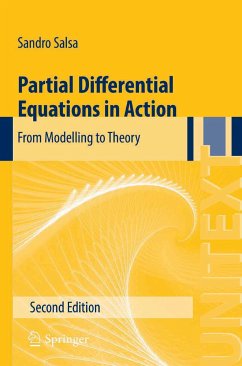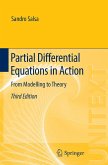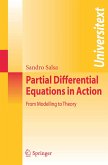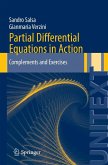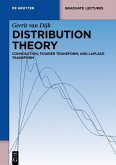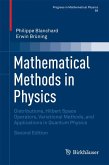The book is intended as an advanced undergraduate or first-year graduate course for students from various disciplines, including applied mathematics, physics and engineering. It has evolved from courses offered on partial differential equations (PDEs) over the last several years at the Politecnico di Milano. These courses had a twofold purpose: on the one hand, to teach students to appreciate the interplay between theory and modeling in problems arising in the applied sciences, and on the other to provide them with a solid theoretical background in numerical methods, such as finite elements. Accordingly, this textbook is divided into two parts. The first part, chapters 2 to 5, is more elementary in nature and focuses on developing and studying basic problems from the macro-areas of diffusion, propagation and transport, waves and vibrations. In turn the second part, chapters 6 to 11, concentrates on the development of Hilbert spaces methods for the variational formulation and the analysis of (mainly) linear boundary and initial-boundary value problems.
"The material, at an advanced undergraduate or first year graduate level, presents a very interesting mix of physical applications and abstract theory supporting rigorous existence and regularity results of PDEs. ... Each chapter begins with a short formal summary of the basic concepts, which is followed by several dozen of problems covering all aspects of the materials in the corresponding chapters of the book." (Peter Bernard Weichman, Mathematical Reviews, July, 2016)
"Provides an excellent overview of the field and is highly recommended for modern PDEs courses designed for advanced students. ... Each chapter first reviews the main theoretical concepts and tools and then provides solved problems and exercises. A broad range of problems and exercises at various levels of difficulty, as well as the extensive reference list, makes this book a valuable resource for advanced undergraduate or beginning graduate researchers ... . Summing Up: Highly recommended. Upper-division undergraduates, graduate students, researchers/faculty." (C. Park, Choice, Vol. 53 (9), May, 2016)
"The authors' aim is to give a systematic treatment of some of the classical methods in partial differential equations. ... the book is a very useful contribution to the growing literature on this circle of ideas. I wholeheartedly recommend this book both as a textbook, as well as for independent study." (Vicentiu D. Radulescu, zbMATH 1330.35003, 2016)
"Provides an excellent overview of the field and is highly recommended for modern PDEs courses designed for advanced students. ... Each chapter first reviews the main theoretical concepts and tools and then provides solved problems and exercises. A broad range of problems and exercises at various levels of difficulty, as well as the extensive reference list, makes this book a valuable resource for advanced undergraduate or beginning graduate researchers ... . Summing Up: Highly recommended. Upper-division undergraduates, graduate students, researchers/faculty." (C. Park, Choice, Vol. 53 (9), May, 2016)
"The authors' aim is to give a systematic treatment of some of the classical methods in partial differential equations. ... the book is a very useful contribution to the growing literature on this circle of ideas. I wholeheartedly recommend this book both as a textbook, as well as for independent study." (Vicentiu D. Radulescu, zbMATH 1330.35003, 2016)

